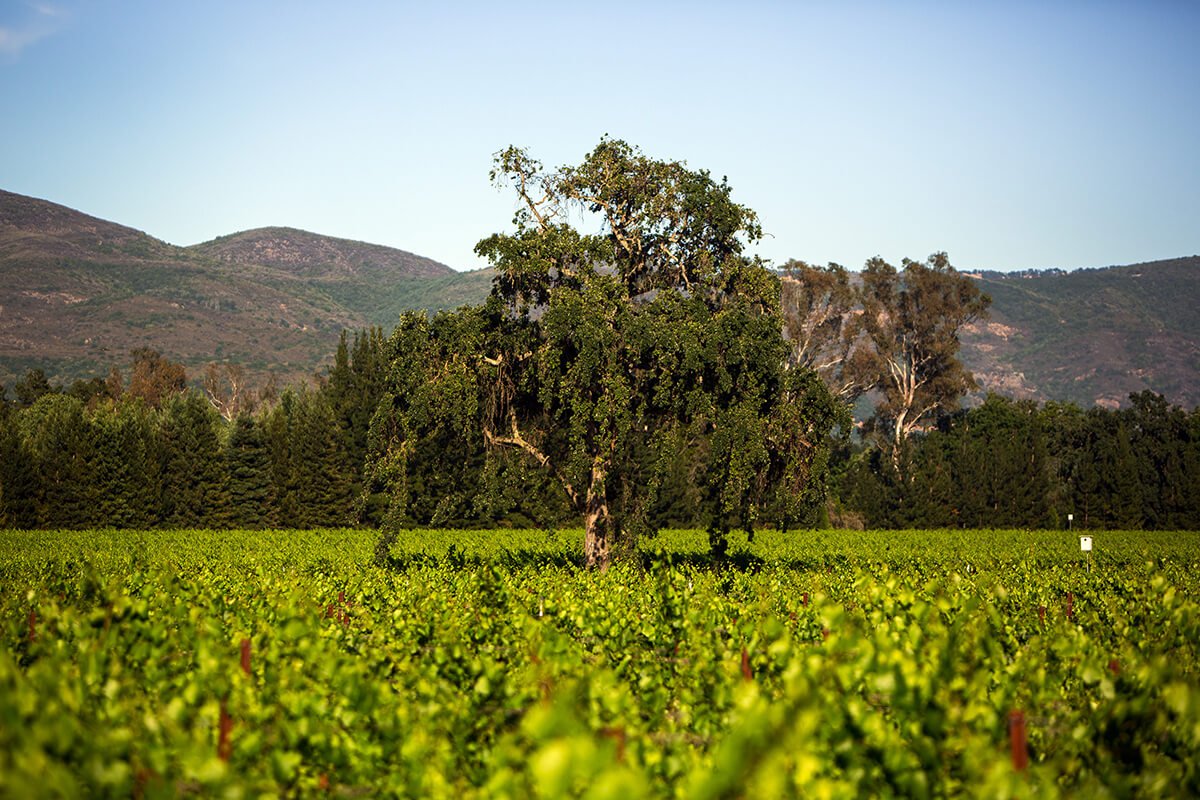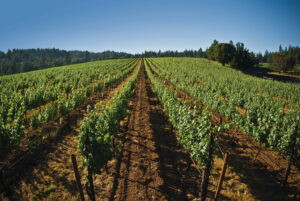
A Recent Webinar Explored the Virtues of Beringer And Its Luminus Chardonnay
by Stefanie Schwalb
Many of the best TV shows involve serious topics shrouded in a mystery that keeps audiences coming back for more (Mare of Easttown, anyone?). By the same token, the latest episode of our SOMM Sessions webinar series, “Making the Best Wines Possible: A Snapshot of Sustainability in Wine Production,” tackled a subject that had a lot of viewers tuning in to ask questions about a complex subject that’s top of mind in the industry today.
Hosted last October by Treasury Wine Estates (TWE) education manager Gillian Ballance, MS, and SOMM Journal VP of education Lars Leicht, the webinar transported attendees to the Oak Knoll District of Napa Valley for insight into Beringer’s 2019 Luminus Chardonnay, illuminating the critical role that sustainability plays in the wine’s production as well as covering the ongoing efforts of TWE to help all its brands put sustainable practices in place.
Sustainability, Organic, Biodynamic— What’s the Difference?
As the session got underway, Leicht took time to explain the distinctions between the terms organic, biodynamic, and sustainable before delving into the benefits of the latter. Simply put, organic farming adheres to a set of principles that include the prohibition of artificial chemical fertilizers, pesticides, fungicides, and herbicides. “There are many producers who don’t necessarily go for the certification but do follow those practices,” he noted. “I’m seeing that more and more, but it’s nice to get that certification—it’s just a little bit more reassuring. I know it’s certainly simpler to qualify for making wine with organic grapes, which is a farming technique, as opposed to applying some of those practices in the winery [to produce] organic wine.” Biodynamic farming takes it a step further, encouraging biodiversity; a closed nutrient system that ensures no raw material goes to waste; and a personal connection to the farm. “It’s definitely a higher form of organic farming and has its roots in the 19th century with [Rudolf] Steiner and the different studies they did—including following the phases of the moon,” Leicht explained.
Sustainability, meanwhile, considers the environmental impact on local ecosystems, from water and energy conservation to the effects of agriculture on air quality to the carbon footprint of packaging. It also supports recycling efforts, strong community relations, and the well-being of workers within the framework of sound business practices. “It’s one thing to make wines that have a sense of place, but wines that have a sense of responsibility to a place become very important—it’s thinking not only what you can get from the land but what can you give to the land to make it and its produce even better,” noted Leicht. “It’s [about] acting as a steward. It involves a serious investment to meet the needs of today while still considering the impact of tomorrow.” There’s an understanding of the consequences of production that, in the long term, also leads to greater profitability, he added, so sustainability makes a lot of business sense, too. Some sustainable practices employed at wineries include the preservation of wildlife corridors; habitat restoration; integrated pest management to promote “good” bugs; and the use of organic matter, cover crops, and sheep “mowers.”

Why Be Sustainable?
“The wine of 20 to 30 years ago, where we were doing all sorts of things to produce massive amounts of wine— which included using chemicals— wasn’t a quality effort, it was a quantity effort,” noted Ballance. But with more and more wineries gravitating toward sustainable endeavors, “a lot of that has now reversed. Ultimately, being sustainable is more cost effective—but it takes a long time to achieve the results, and it’s more labor intensive as well,” she added.
Even so, TWE has been committed to numerous initiatives for several years now. All TWE Americas properties are sustainably farmed; since 2018, the company has provided annual sustainability reports detailing its strategies, goals, and commitments. To address water efficiency and conservation, it has utilized drip irrigation, barrel steam-cleaning, rainwater capture, and recycled water, among other things. To increase energy efficiency, LED lighting, solar panels, and pulse cooling to lower tank temperatures in batches (rather than send out coolant faster than it can be used) are examples of a few things in practice, while waste is managed through alternative packaging, composting, the use of lighterweight glass, and recycling.
TWE Americas properties also seek to make continuous improvements through research and innovation. One development is the application of Fluidized Bed Cold Stabilization (in partnership with the University of California, Davis, Department of Viticulture and Enology), a technology that will radically reduce energy use, water consumption, and chemical use in the pre-bottling phase of wine production. “It is a major step forward from the traditional method of chilling the entire wine tank, allowing the winemaker to ‘turn up the thermostat’ on the entire winery to save both energy and water used in refrigeration,” Ballance said. They are also utilizing irrigation technology (to accurately measure vines and locate zones of water stress, leaks, and soil variation) and AI technology to detect and react to risks (frost or excessive heat). As for community support, TWE Americas encourages employee volunteer work, provides donations to the Napa Food Bank, and protects natural wetlands.
During the webinar, Ballance also revealed some upcoming sustainability targets that are quite aggressive (and therefore impressive) in their reach: TWE intends for 100% of its product packaging to be recyclable, reusable, or compostable in 2022 and to comprise 50% recycled content by 2025. It also aims to reach net zero carbon emissions by 2030. Electricity is considered scope 2 and accounts for 70.4% of TWE’s total scope 1 and 2 emissions, Ballance explained, so achieving 100% renewable electricity by 2024 (another key target) is the quickest path to decarbonization. “The sources of our scope 1 emissions vary from lawnmowers and generators to gas-fired boilers,” added Ballance. “Our approach is going to be multifaceted: We’ll electrify what we can, as that will be powered by renewable; continue to focus on improving efficiency; and then switch technologies and to alternative fuel sources where possible—ultimately sequestrating remaining limited hard-to-decarbonize emissions.”
Let There Be Light
Certified under the Napa Green Winery and Napa Green Land programs as well as by the California Sustainable Winegrowing Alliance, Beringer Winery has reduced its energy consumption by more than 30% since 2007; it also installed the largest solar array of any winery in the state at the time it was commissioned in 2012. All of its North Coast vineyards, both estate and leased, are also certified by Fish Friendly Farming.
That includes Big Ranch Vineyard in the Oak Knoll District, from which Luminus hails. This 100% Chardonnay, which spends eight months in (30% new) French oak, is meant to be food friendly at 14.9% ABV. “The name is taken from the word ‘light’ in Latin,” said Ballance. “Luminus is meant to be a departure from what you might typically think a Beringer Chardonnay tastes like—especially Private Reserve—because it’s so big and intense. This is meant to be the contrasting partner in terms of Chardonnay styles.

Beringer 2019 Luminus Chardonnay, Oak Knoll District, Napa Valley ($40) Lit from within, notes of ginger, Anjou pear, lime sorbet, and sweet cream converge with a satiny mouthfeel. As the wine opens up, acidity and minerality come through along with a crispness on the finish that is in sync with toasty hints of butterscotch. 93 —Meridith May
TREASURY WINE ESTATES
